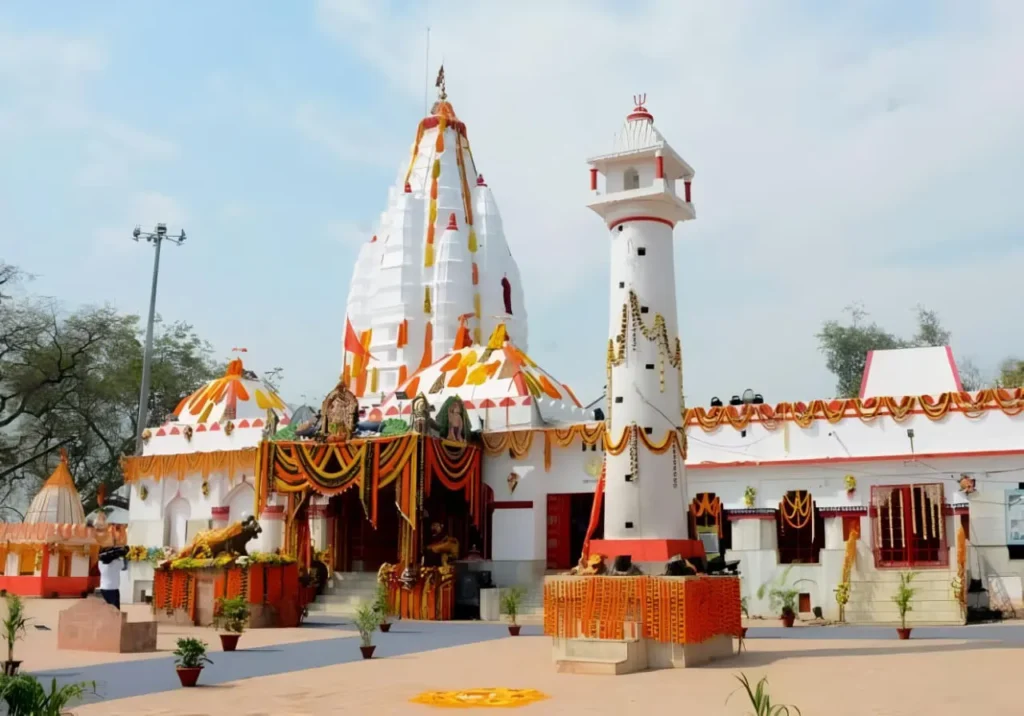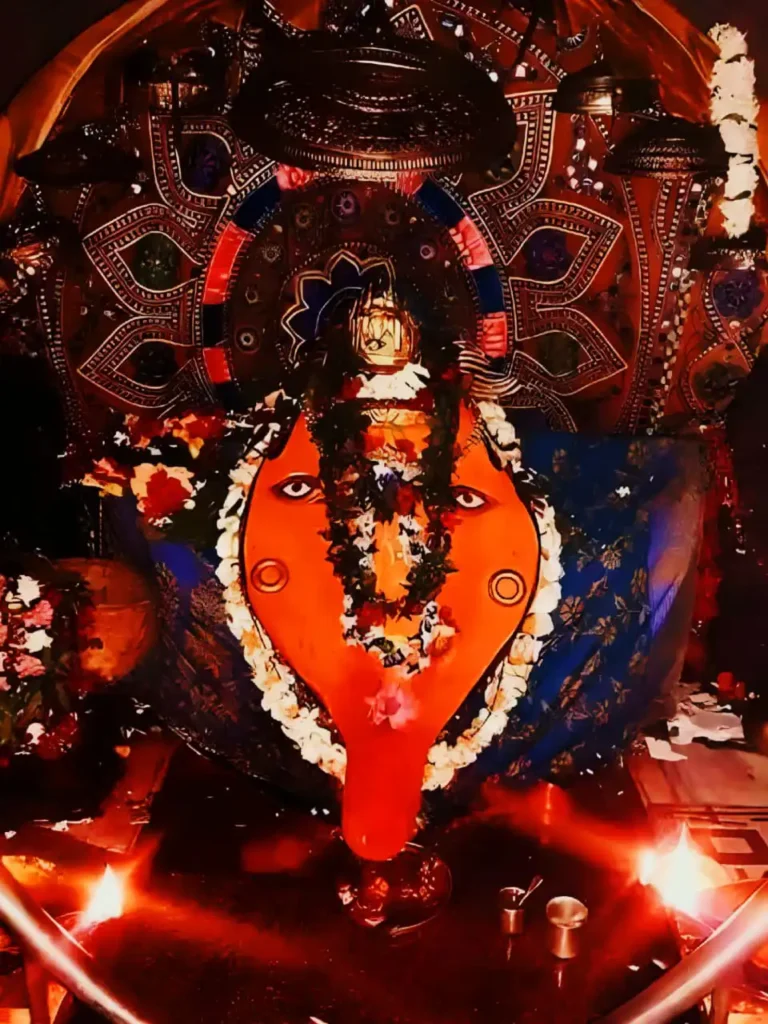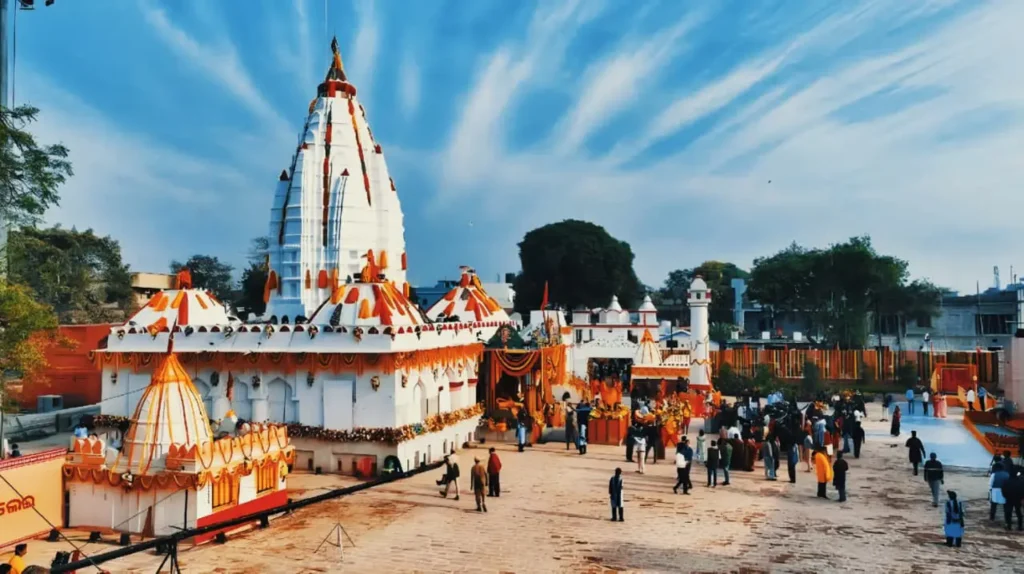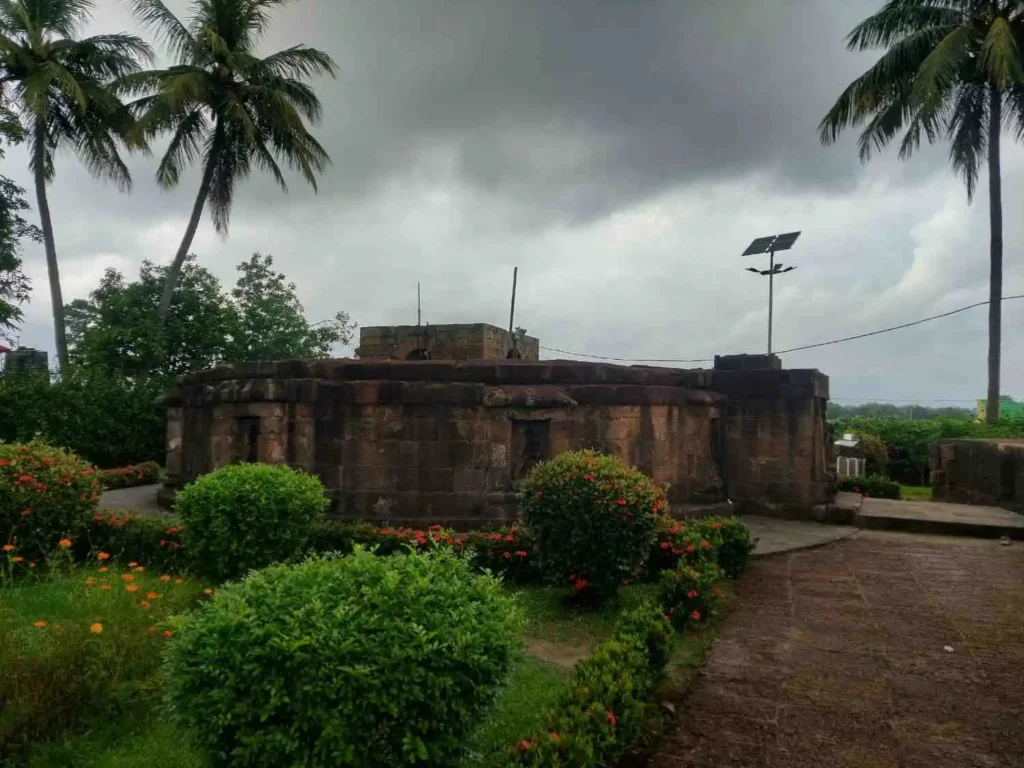
Table of Contents
Introduction: Where Faith, Culture, and Legacy Intertwine
Sambalpur in western Odisha is more than just a historical city — it’s a vibrant melting pot of tribal traditions, ancient Tantra practices, and Hindu beliefs. At its spiritual heart lies the Samaleswari Temple, dedicated to Maa Samalei, lovingly known as the Iswari of Sambala. For centuries, this sacred site has been revered not only by the indigenous tribes but also by rulers who reshaped its legacy into what we see today.
Origins of Maa Samalei: A Deity Born from the Land

According to oral traditions, Raja Balaram Dev, the first Chauhan ruler of Sambalpur in the 16th century, discovered a shapeless stone beneath a Semel (silk-cotton) tree. This stone later became revered as Samalei Devi. The Semel tree’s name is believed to be the linguistic root behind the name Samalei.
But long before royal discovery, local tribal communities like the Saharas and Jharas had already worshipped the stone as a divine presence. They were diamond collectors on the banks of the Mahanadi who believed they had unearthed a sacred rock.A Fusion of Tantra and Tribal Worship
Sambalpur wasn’t just a tribal heartland — it was a prominent center of Tantrik Buddhism. During the 8th century A.D., the region was home to great spiritual figures like Indrabhuti and Laksminkara, founders of the Vajrayana and Sahajayana Tantrik schools.
Samaleswari Temple still echoes Tantrik symbols:The rock idol has gold leaves for eyes and a groove resembling a mouth — believed to carry Tantrik influence.
The presence of human footprints (Sitalamata) at the temple mirrors similar Tantrik sites in Odisha.
From Tribal Shrine to Royal Temple

After discovering the idol, Raja Balaram Dev enshrined Samalei in his newly founded capital. Over time, Samalei became Samaleswari, the reigning goddess of Sambalpur. His successor, Raja Chhatra Sai, went a step further by donating forty villages to support the temple’s rituals — an unprecedented act of state devotion.
Mystical Legends That Shaped Devotion
The Courageous Hare
One story tells of a meek hare that fought off royal hounds, convincing Raja Balaram Dev of the land’s divine energy — right before he dreamt of Samalei asking for worship.
Samalei as Milk-Maid
Another tale claims Samalei, in disguise as a milk-maid, poisoned the army of the infamous invader Kalapahada, protecting the fleeing Jagannath priests. Her supernatural power cemented her as the protector of the region.
The Priest’s Daughter
Interestingly, an eerie legend says that Samalei once consumed the daughter of her priest. Consequently, the deity now faces away from the temple entrance.
Human Sacrifice to Symbolic Offerings
Long ago, human sacrifices were reportedly offered at the temple. But when a Siddha Brahmin survived a night alone inside the sanctum, it marked a shift. Maharaja Baliar Singh abolished the practice, replacing it with buffalo and goat sacrifices, which still occur during festivals like Durga Puja and Chaitra Purnima.
Inclusion of Tribal Worship: The Real Power of Samaleswari

Remarkably, even after state patronage, the temple retained its tribal roots:
- For instance, Saharas (untouchables in social hierarchy) served as priests.
- Additionally, Jharas held the canopy for the goddess.
- Meanwhile, in villages, Jhankars, non-Brahmin priests, continue to worship Samalei beneath trees, under open skies.
- Ultimately, this practice showcases a rare spiritual democracy, bridging caste, culture, and tradition.
Why Samaleswari Temple Still Matters Today
Clearly, the temple is not just a place of prayer — it’s a living testament to:
- Firstly, cultural integration between tribals and caste Hindus.
- Secondly, evolution from Tantrik and folk worship to mainstream Hinduism.
- Finally, a political strategy that helped rulers legitimize power through shared belief.
Visit Samaleswari Temple, Sambalpur
Things to Know Before You Go:
Location: Sambalpur, Odisha, on the bank of the Mahanadi River
Deity Form: A sacred rock, symbolizing the face of Maa Samalei
Best Time to Visit: Chaitra Purnima, Navratri, and Durga Puja
Nearby Attractions: Hirakud Dam, Huma Temple, and Ghanteswari Temple
Location: Sambalpur, Odisha, on the bank of the Mahanadi River
Deity Form: A sacred rock, symbolizing the face of Maa Samalei
Best Time to Visit: Chaitra Purnima, Navratri, and Durga Puja
Nearby Attractions: Hirakud Dam, Huma Temple, and Ghanteswari Temple
People Also Ask (FAQ Section)
1. Who is worshipped in Samaleswari Temple?
The temple is dedicated to Maa Samalei, an indigenous tribal goddess later revered as Samaleswari, the presiding deity of Sambalpur.
2. Why is Samaleswari Temple famous?
It’s a symbol of tribal-Hindu integration, renowned for its deep-rooted Tantrik influence, royal patronage, and rich legends.
3. Is Samaleswari a Shakti Peetha?
Though not officially one of the 51 Shakti Peethas, oral traditions link it to the head of Goddess Sati, giving it great spiritual significance.
4. What rituals are performed at the temple?
Daily offerings, animal sacrifices during festivals, and Jatra (processions) of the replica idol are key rituals.
5. Can non-Hindus visit Samaleswari Temple?
Yes, the temple welcomes all spiritual seekers, though inner sanctum access may be limited to traditional worshippers.
Final Thoughts: Samaleswari — More Than Just a Temple
The Samaleswari Temple Sambalpur is not just a place of worship, but a cultural crossroads — where tribal devotion, Tantra, and Hinduism converge. It teaches us that true unity lies in embracing diversity, and spiritual power often rises from the humblest roots.
If you're someone who loves to explore India's hidden spiritual gems, the story of Maa Samalei in Sambalpur is a must-experience. Plan your visit, feel the history in the stone, and let the divine legacy of Samaleswari leave you spellbound.


